Norfolk & Western Business Car No. 300
It seems like my trip on the Super Dome was only the beginning of my private varnish journeys in 2023. A few months later I was asked if I wanted to take the Norfolk & Western Business Car No. 300 on a fall colors excursion train through northeast Indiana and southeast Michigan.
>> WATCH EXCLUSIVE VIDEO highlights of Bryson’s private train trip, hosted by Lowell Smith, along the route of Amtrak’s California Zephyr <<
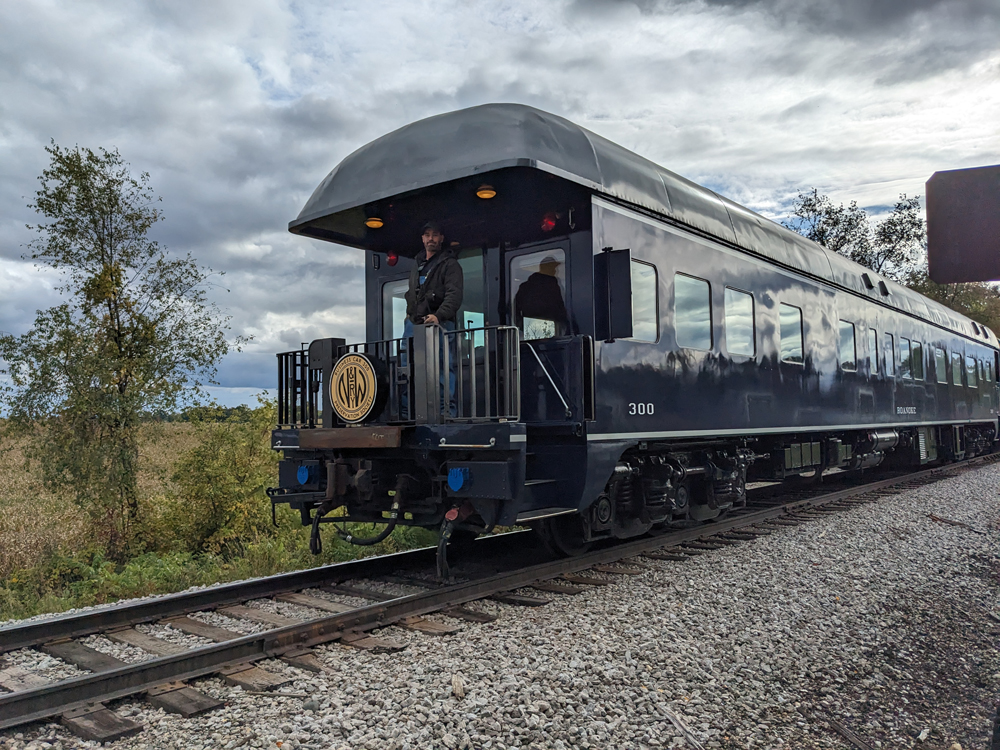
Of course I said yes. This was a car that I had actually been in before, but only for around 15 minutes while sitting in a yard. I had never had the chance to ride it. After the trip, I sat down with Bryan Lalevee, founder and president of the organization, to learn how the car and organization operate behind the scenes.
Q: Can you tell me the history behind this business car?
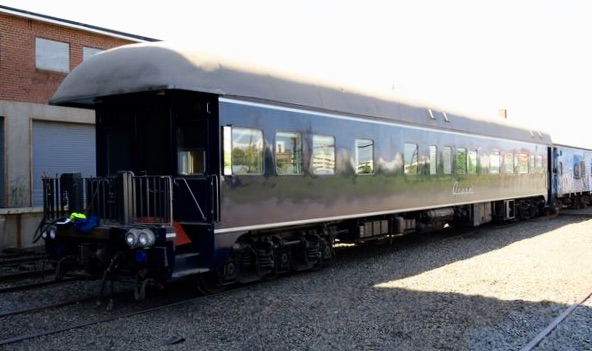
A: No. 300 was built by the Pullman Co. in June of 1917. It served Norfolk & Western for its career and was inherited by Norfolk Southern in 1982. It saw sporadic use during the NS era and was eventually sold at auction in 1987 to a private individual. In 1988 it was Amtrak-certified and had its air conditioning system and generator upgraded. It traveled across the United States and Canada behind Amtrak and VIA Rail Canada until 1991 when it was put into a warehouse.
I have always loved private cars and knew of the car and that it was in a warehouse. I made some phone calls in 2017 which eventually led me to the owner of the car. He said he had no plans for it, and I asked him to consider donating it to a nonprofit organization. He agreed to meet me at the car in 2018 and I hired a QMP [qualified mechanical person]. We found that the exterior was in phenomenal condition, but the inside was trashed. It was covered in mold and the carpet was falling apart. No mechanical systems were operational at all.
I approached the Indiana Northeastern Railroad and the Little River Railroad about this before any decisions were made. My initial plan was to just operate on the Little River five or six times a year. I then presented a 16-page proposal to the owner of the car.
In 2019, I got a text where the owner said to create the nonprofit [Norfolk & Western Business Car 300 Preservation Society, Inc.]. I formed it but didn’t hear anything until 2020. I got a random text message saying, “Let’s do this.” So we got legal teams together and worked out all the details. On Oct. 9, 2020, the car was officially donated.
It was still in Philadelphia, so I drove out there to get it ready to move. The owners of the shop said it was being held in donated labor to upgrade the air brake system. We did a full COTS [brake inspection; the initials stand for Clean, Oil, Test, and Stencil] and disassembled slack adjusters. All of this was to get it road-worthy.
In January of 2021, we moved the car from Philadelphia to Lima, Ohio, via CSX. It was then interchanged with the Chicago, Fort Wayne & Eastern and sent to Valparaiso, Ind. A local lumber company allowed us free use of their unloading spur. From Jan. 19th to Oct. 1st, we rehabbed the entire car. Servpro got rid of the mold. We removed furniture and carpet, repainted the inside of the car, and removed the generator. We had a new generator installed 12 days after removing the old one. We worked on getting the rest of the mechanical systems up and running, including HVAC, the refrigerator, and the toilets. Some days we would leave the car at 4:30 a.m., some days we would get to the car at 4:30 a.m.
Finally, nine months after the start of the restoration, we had an open house. Currently, the only thing that doesn’t work is the freezer because of a shot compressor.
We reached an agreement with the INE and shipped the car to Montpelier, Ohio. Our first trips operated in 2021 on the Little River RR between Coldwater and Hillsdale, Mich. We sold out one trip and demand was so high that they decided to run a second trip the next week.
I then got a phone call from Kelly Lynch of the Fort Wayne Railroad Historical Society, asking to get lunch. He told me that they were bringing Nickel Plate Road No. 765 to the Indiana Northeastern and asked if No. 300 could be at the rear of the train. We signed a partnership with the FWRHS. They lease 300 from us and are in charge of daily maintenance. Our organization staffs the car when available. We ran 11 trips with FWRHS in 2022 and 24 in 2023. It has been a very beneficial partnership, allowing guests to experience something unforgettable.
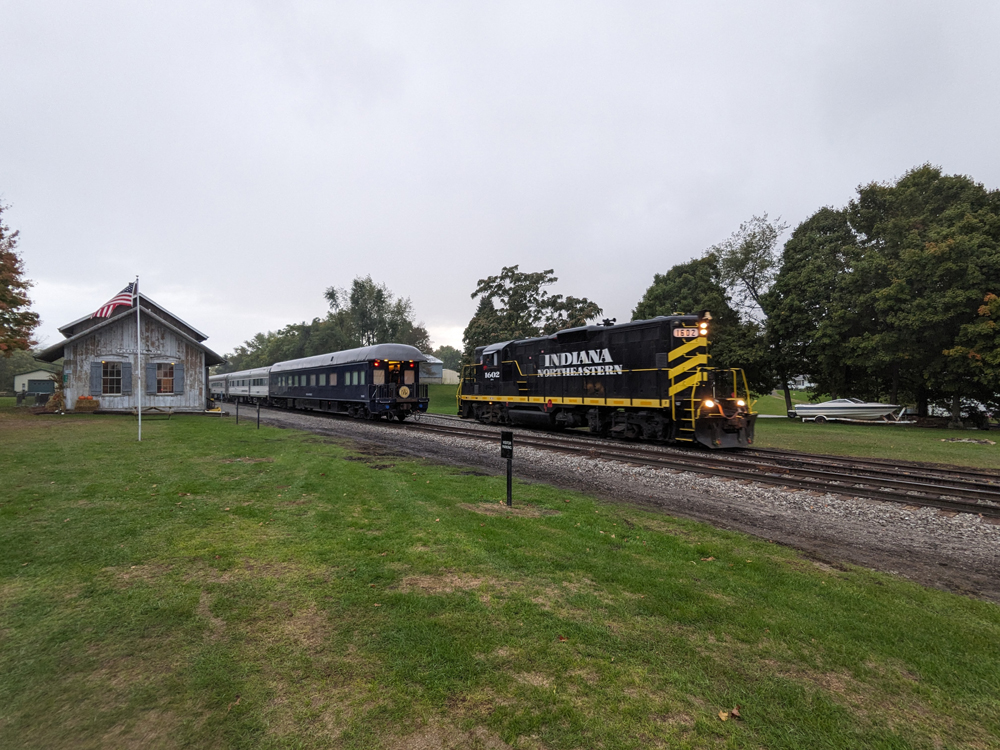
Q: Where does this car run? Only on the Indiana Northeastern behind No. 765? What about Amtrak?
A: We’re not Amtrak certified anymore. Since the car was last certified on Amtrak in the 1990s, Amtrak’s Standard Maintenance Procedure changed drastically. It would involve further Amtrak certification now and that’s not in our plans due to the cost involved.
Q: When I rode on the car in October of 2023, we were allowed to ride on the open platform at the rear, what are the stipulations regarding this?
A: The FWRHS permits us to allow a maximum of six people on this platform and it’s also allowed by INE. However, this would not be allowed if we used the car on Amtrak.
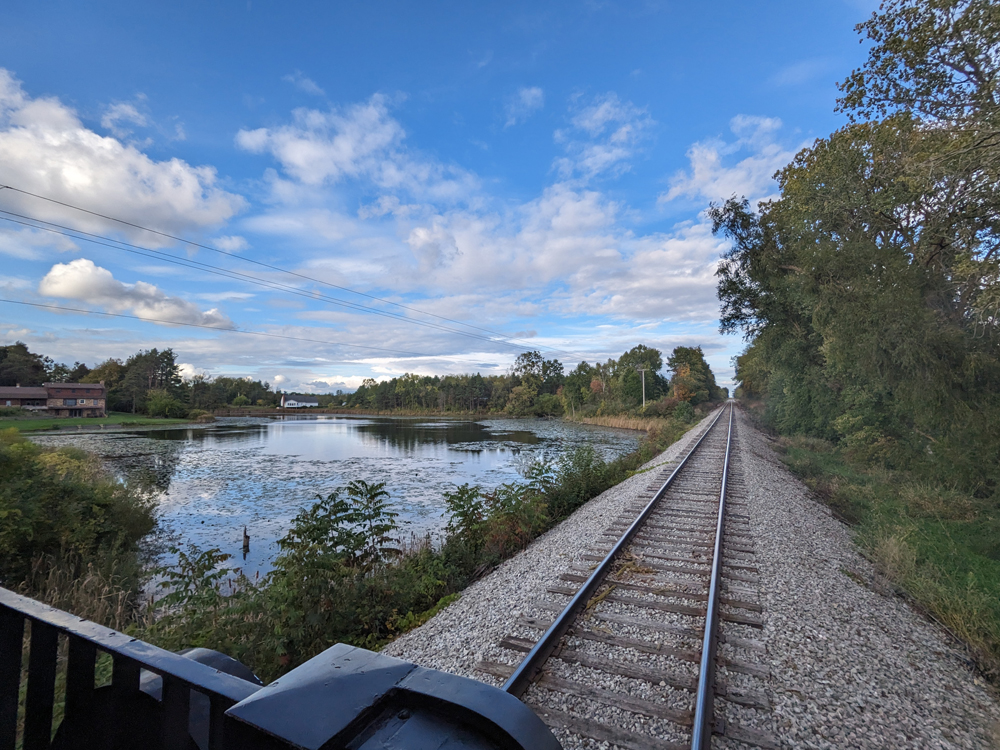
Q: How do you preserve No. 300 historically?
A: In 1956 the car was modernized by N&W’s Roanoke shops. The interior configuration was altered with a presidential stateroom added. The car also received new sidesheets and windows. And the car received the “balloon” roof on the top, meant to make it look like a streamlined car. During our restoration, we tried to bring the car back as close to 1956 as possible, because we can’t really go back much further.
Q: Are there any crazy examples of historical things on the car that have been refurbished or recreated?
A: The dining room table is original, as well as the buffet, dressers in bedrooms, and the couch in the lounge. We believe the mattress in the president’s stateroom is also original, as the tag on it is from a furniture company that doesn’t exist anymore.
One tradition that Roanoke shops had was for shop workers to autograph the cars they worked on. I found at least four signatures that were dated from 1920 to 1956. I also found a signature under a sill plate cover in the hallway that showed a person’s signature and “completed 1956” to signify the completion of the modernization.
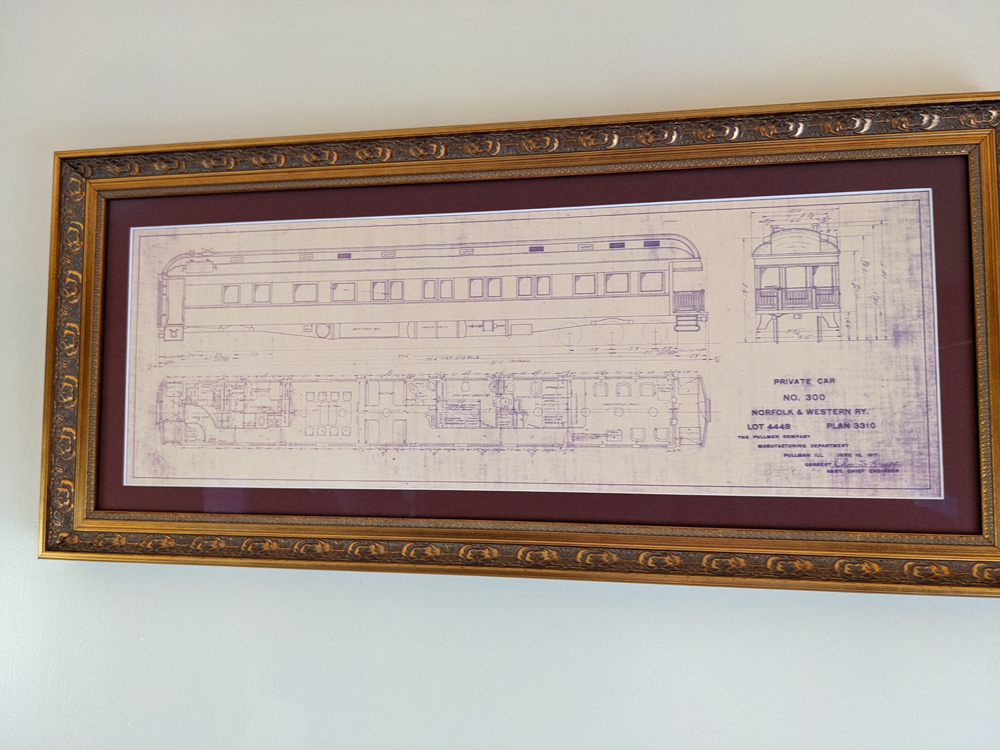
Q: What do this car’s day-to-day operations look like when in service?
A: During a normal pre-trip, the car is completely cleaned, swept, and vacuumed. The floors are mopped, the windows cleaned, and the furniture cleaned. The stainless steel in the kitchen is cleaned. We try to get the car as clean as possible. Then we give it a sponge bath using water and vinegar.
During wintertime, the generator car will be started earlier than usual, and this gets the baseboard radiator heating system working.
During the trip, car hosts serve drinks and food to guests. A first for us this year was having professional chefs onboard to cook breakfast on the original N&W business car China.
After the trip, we sweep and mop again, clean toilets, empty trash, and reset the hand towels. We do our best to reset the car for the next trip.
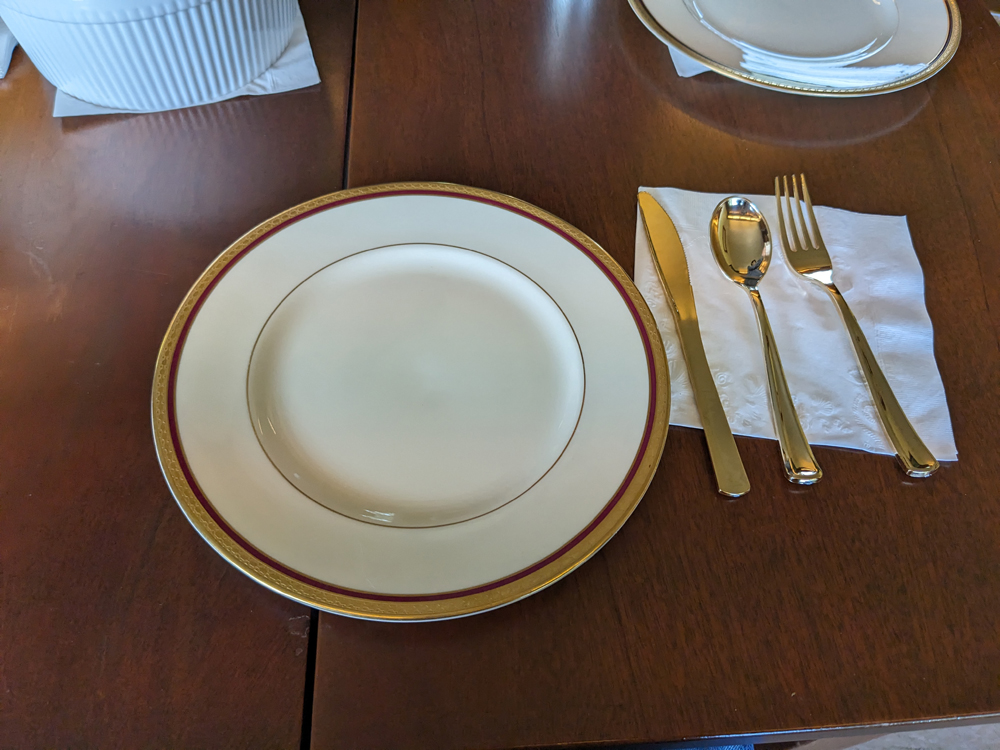
Q: What does maintenance on the car look like? Does most of it take place during the offseason?
A: After our season, the first thing we do is drain water from the car and blow out the faucets. The main water drain valve is opened up and every faucet and spigot in the car, which releases the vacuum and drains the water. We then pressurize the car with an air compressor and blow out each individual line.
We change the oil and filters in the generator yearly. The handbrake is re-certified every year. Brake shoes are replaced as needed, which is good for us with the engine crew not using a lot of train air when braking.
We work on other things in the car during this time. We recently installed a brand-new hot water system on the car after removing the old system.
Q: What does your role as president and founder entail?
A: I work a lot with our fundraising campaigns. We raised about $17,000 in four and a half months and then received a grant from NS, all to repaint the car into its Tuscan Red scheme. So I do a lot of grant writing.
It’s also up to me to give the organization direction. I have to think three, six, even eight months in advance. I’m currently getting materials together to get the car painted. The car will be heading out for paint at Professional Locomotive Services in East Chicago, Ind., in January.
I manage the inner workings and behind-the-scenes stuff, and delegate tasks to our volunteers.
Q: Speaking of volunteers, are you an all-volunteer organization? Is there any staff?
A: We’re all-volunteer, including me. Every penny that we earn is put back into the organization.
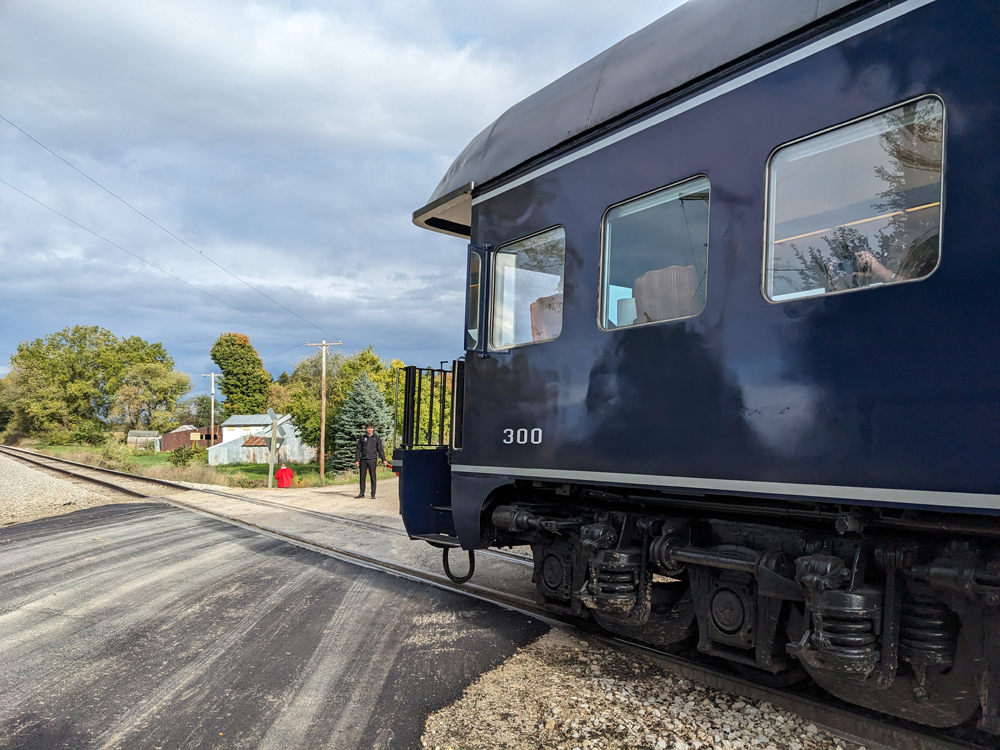
Q: How much does it take to ride on this car?
A: FWRHS determines the ticket price for the car, which is almost always a charter of the entire car for one set amount. To find those prices, go to indianarailexperience.org.
Q: What are the biggest challenges that you face?
A: We haven’t run into any challenges that we couldn’t overcome. I believe that we have the right people with the right skill sets and we can operate the car without any major issues. We did have some wires burn up because contacts were corroded, so we had to do a really good electrical corrosion cleaning. We haven’t had a problem like that since.
Q: And finally, what’s the most rewarding part of operating this car?
A: Knowing that we’re saving a piece of history. We saved the office car from the president of the railway, that’s huge.
I also love the look on people’s faces when they get off the car—grinning from ear-to-ear. The compliments we get from guests, and seeing happy faces come off the car, make me realize why we’re doing this.
I came away from both of these trips and interviews knowing so much more about private varnish than I ever expected, and I hope you learned something along the way.
Missed part one? Click link to read, “Behind the scenes of private varnish.”














I think I will “upgrade” my next trip.